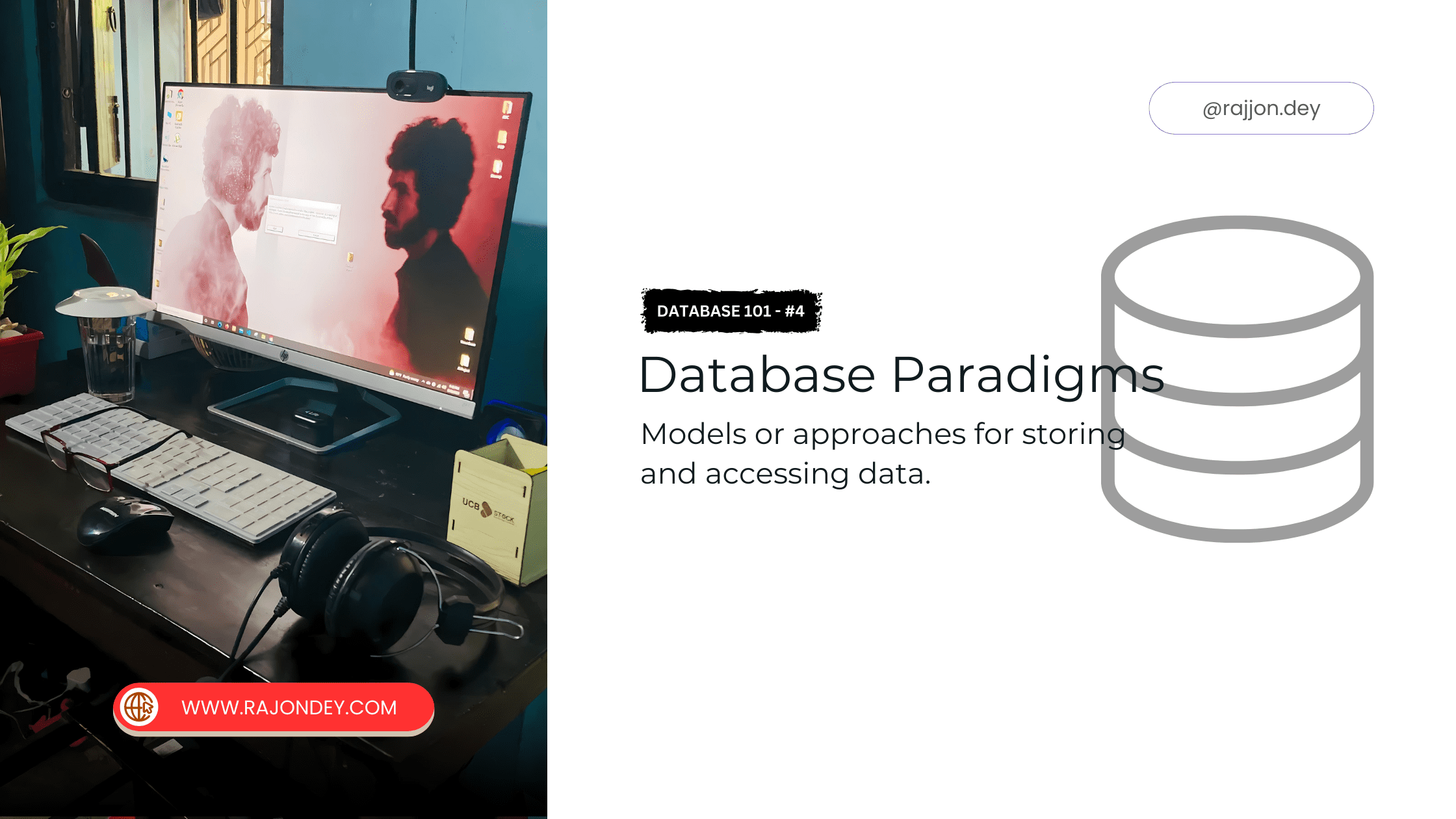Database Paradigms
 Rajon Dey
Rajon Dey
When we talk about database paradigms, we're referring to different models or approaches for storing and accessing data. Each paradigm has its strengths and is suited to specific types of data and use cases. Let's explore some of the most common paradigms and their representative databases.
Key-Value Databases
Key-value databases store data as a collection of key-value pairs, similar to a dictionary. They are simple and fast, making them ideal for caching and real-time applications.
Example: Redis
- Redis is an in-memory key-value store known for its speed and efficiency. It's often used for caching, session management, and real-time analytics.
Wide Column Databases
Wide column databases organize data into rows and columns, but unlike traditional relational databases, each row can have a different number of columns. This flexibility makes them well-suited for handling large amounts of data across many servers.
Examples:
Apache Cassandra
ScyllaDB
DynamoDB These databases are designed for high scalability and performance, often used in big data applications and real-time analytics.
Document Databases
Document databases store data in documents, often using a JSON-like format. Each document can contain complex nested structures, making them highly flexible for a wide range of applications.
Example: MongoDB
- MongoDB stores data in BSON (binary JSON) format, making it easy to store and query hierarchical data. It's popular for web applications and content management systems.
Graph Databases
Graph databases are designed to handle data with complex relationships. They use graph structures with nodes, edges, and properties to represent and store data, making them ideal for social networks, recommendation engines, and network analysis.
Example: Neo4j
- Neo4j excels at managing and querying interconnected data, allowing for efficient traversal and analysis of complex relationships.
Relational Databases
Relational databases use tables to store data, with rows representing records and columns representing fields. They rely on SQL for querying and maintaining data integrity through relationships.
Examples:
MySQL
MariaDB
PostgreSQL These databases are widely used in various applications, from web development to enterprise systems, due to their robust features and reliability.
Search Engine Databases
Search engine databases are optimized for searching and retrieving information quickly. They are often used for full-text search and analytics.
Example: ElasticSearch
- ElasticSearch is a distributed search engine that allows for powerful full-text search and real-time analytics, commonly used for logging, monitoring, and search applications.
Multi-Model Databases
Multi-model databases support multiple data models, such as key-value, document, graph, and relational, within a single database. This versatility makes them suitable for a wide range of applications.
Examples:
FaunaDB
MongoDB
Redis These databases provide the flexibility to use different data models as needed, simplifying the architecture and development process.
Understanding these database paradigms helps you choose the right database for your specific needs, ensuring optimal performance and scalability for your applications.
Subscribe to my newsletter
Read articles from Rajon Dey directly inside your inbox. Subscribe to the newsletter, and don't miss out.
Written by

Rajon Dey
Rajon Dey
I'm a Software Developer, my passion is crafting smart, meaningful, and professional websites that enhance the online presence of individuals and businesses, making the web a more engaging, effective, and better platform. Get the data - https://developer-data.beehiiv.com/